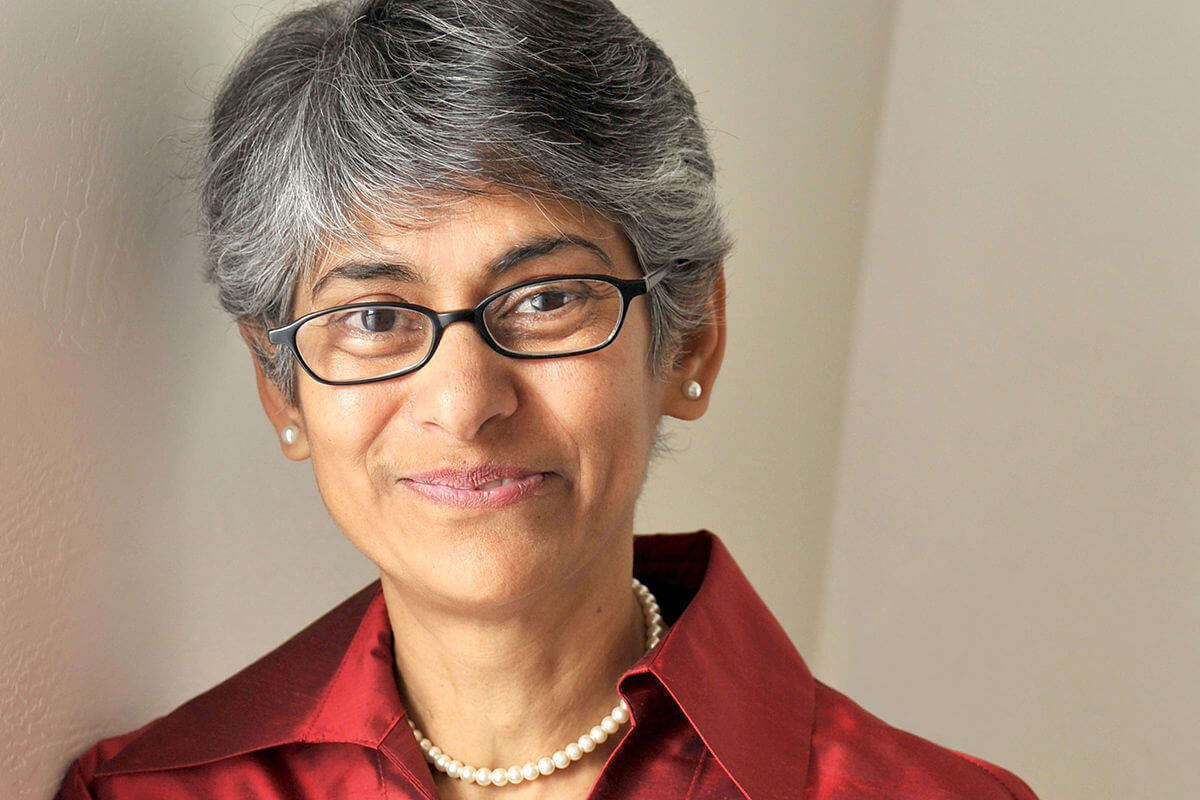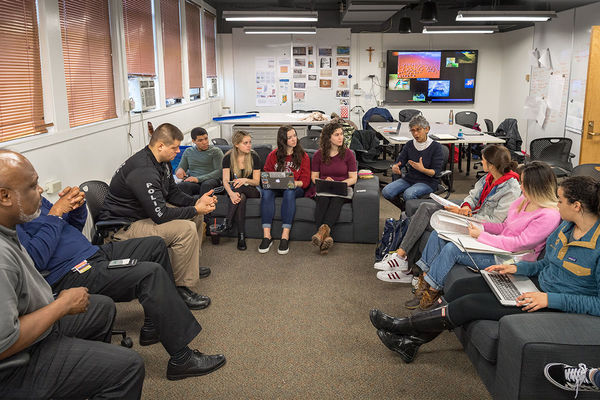
Neeta Verma’s teaching and research examines a range of social inequities facing the local community — including homelessness, poverty, and the digital divide.
But the issue she finds most pressing is youth violence — and she believes that art and design can play a key role in breaking its vicious cycle.
With a grant from the Jessie Ball duPont Fund, she is launching a two-year project that will use community-designed public art installations and youth programming to address this systemic problem.
“While I was writing this grant in September, the city of South Bend saw its 100th shooting this year, so this funding comes at a very critical moment for us,” said Verma, the Robert P. Sedlack Jr. Associate Professor in the Department of Art, Art History & Design.
“But 100 is just a number. When you hear a mother talking about her loss, that's when you realize the true impact of a tragedy like this. This is avoidable. Every child has the right to equal opportunities and a hopeful future.”
The project has three goals — to memorialize those who have been lost to violence and their families, to provide an opportunity for at-risk youth to engage with their community in productive ways, and to give the youth at the center of the crisis a voice and a chance to create their own narrative.
“Research shows that a great deal of healing comes from expression, especially artistic expression,” Verma said. “Through the use of abstraction or symbolism, you can give shape to feelings that may be difficult to express through words.”
“Research shows that a great deal of healing comes from expression, especially artistic expression. Through the use of abstraction or symbolism, you can give shape to feelings that may be difficult to express through words.”

Verma has already begun research for the project and is working closely with a number of partners at the University and in the South Bend community — including the South Bend Group Violence Intervention initiative, Mamas Against Violence, and Goodwill. She has also received grants from the Community Foundation of Saint Joseph County and Notre Dame’s Center for Social Concerns, as well as in-kind contributions from South Bend’s Department of Innovation and Technology.
“An issue like youth violence has ramifications not just for here and now, but also for the future of our city — and I am so thankful to have found committed and willing partners,” she said. “These people have given me the ability to pursue this with conviction, and they deserve a lot of credit for the work we are about to embark on.”
Verma hopes to begin a pilot program for the project in early 2021, assembling a group of 25 to 30 teens and young adults who have experienced violence or loss from local churches, community centers, and the Juvenile Justice Center.
This initial youth design team, led by Verma, will be tasked with designing dynamic, digital public installations, combining art and design at the intersection of technology, that will serve as a memorial to those lost to violence. They will then bring their ideas to the community for feedback in a series of town hall meetings.
“After talking with the community, they will decide how to channel those voices and meld them with their own ideas,” she said. “They will present their final solutions to the community, and the first set of installations will be a reflection of their combined vision.”
Giving youth the opportunity to work with members of their community — and to see the pain associated with their loss — underscores the fact that no one exists in isolation, Verma said. There are connections between all of us that we need to recognize and better understand.
“When those connections between us go wrong, that’s when we need to pay attention,” she said. “And we have had 100 reasons this year alone to sit up and take notice.”
Youth violence is not simply a problem of individual choices, but a multifaceted manifestation that reveals a frayed social fabric, she said.
“What I hope to do with this project is begin to reweave some of those frayed threads,” she said. “By giving voice to the voiceless — among our youth and the community — we can begin to make that social fabric robust again.”
“What I hope to do with this project is begin to reweave some of those frayed threads. By giving voice to the voiceless — among our youth and the community — we can begin to make that social fabric robust again.”
Originally published by at al.nd.edu on December 03, 2020.